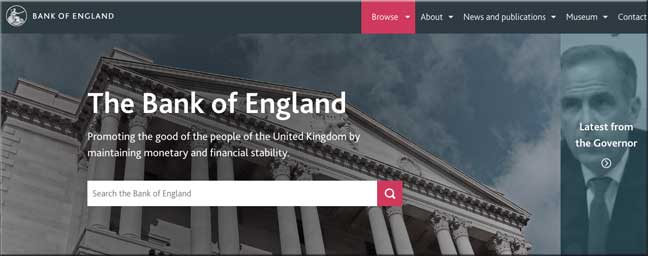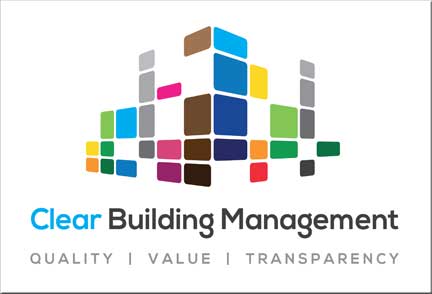 The Leasehold Knowledge Partnership is concerned that the Bank of England is pandering to the commercial interests in the multi-billion pound leasehold sector by supporting lease valuation models weighted in the landlord’s favour.
The Leasehold Knowledge Partnership is concerned that the Bank of England is pandering to the commercial interests in the multi-billion pound leasehold sector by supporting lease valuation models weighted in the landlord’s favour.
In a study of valuations for equity release mortgages, the Bank of England has naively accepted the leasehold sector’s punitive so-called “deferment rates” used in valuations to extend leases and to buy the freehold.
LKP’s concerns are echoed by economist Professor Kevin Dowd, of Durham University, who fears that the bank is “listening to the powerful industry groups who want an excessively low deferment rate to boost freehold valuations”.
Professor Dowd says: “The first task should be a public consultation procedure to determine the most appropriate methodology.”

Deferment prices are the price that would be agreed and settled today to take ownership of the asset at some point in the future, i.e. a form of freehold price. The paper considers a 2% rate to be the ‘best estimate’, with 1% or less being ‘difficult to justify’.
The lower the deferment rate the more advantageous this would be to the freeholder; the higher the rate, the better for leaseholders.
So owners of a £750,000 London flat with an 80-year lease seeking to buy the freehold would pay around £337,000 with a one per cent deferment rate. But assuming a 3 per cent deferment rate, it will cost them only £68,000.
While the range of the deferment rate seems small, there is a difference of more than a quarter of a million pounds between the two assumptions.
The Leasehold Knowledge Partnership is so concerned about the issue that it has written to the Bank of England’s governor, Mark Carney, and the deputy governor Sam Wood (in full, below). It has also invited the bank to explain its methodology to the All Party Parliamentary Group on leasehold and commonhold reform.
The Bank of England’s acceptance of the leasehold sector’s unbalanced deferment rates comes in its Prudential Regulation Authority looking at equity release mortgages.
“But there is a strong possibility that the use of the deferment rate could become the de facto market standard and the tribunals could look to this model in the future,” LKP writes to the bank.
“We are disappointed that no detailed reasoning is given for the choice of 2% as best estimate.
“It seems the [bank’s] Prudential Regulation Authority has come up with a number, without explanation or detailed working, that could have an enormous impact on the leasehold market.”
Professor Dowd commented:
“The PRA’s proposed ‘best estimate’ deferment rate of 2% is low and it is a matter of considerable concern that the PRA provides no evidence to support this estimate.
“The suspicion remains that the PRA is listening to the powerful industry groups who want an excessively low deferment rate to boost freehold valuations, and that they are not listening at all to the interests of ordinary leaseholders.
“The first task should be a public consultation procedure to determine the most appropriate methodology.”
While the Prudential Regulation Authority is part of the Bank of England, it is funded by “the fees we charge firms. These fees depend on the size and type of firm, and the potential risk they could pose to financial stability.”
Leaseholders concerned about the direction the Bank of England has taken on this issue, should write to:
Prudential Regulation Authority 20 Moorgate London EC2R 6DA
Email: CP13_18@bankofengland.co.uk
Mark Carney, Governor, Bank of England
Sam Woods, deputy governor
cc James Brokenshire, Secretary of State Communities etc
Sir Peter Bottomley MP
Jim Fitzpatrick MP
Sir Ed Davey MP
Dear Governor,
We write to you as the directors and trustees of the registered charity the Leasehold Knowledge Partnership, and as the secretariat of the All Party Parliamentary Group on leasehold and commonhold reform. The charity exists to protect ordinary leaseholders who are too often caught up in the leasehold trap. These leaseholders have no opportunity to understand many of the highly complex rules that operate in this sector, and yet they face professionals for whom this form of tenure can be highly lucrative. Getting justice can be difficult, the property tribunal cost regime is unfair, and there are numerous expensive pitfalls that must be avoided.
We have just read the Prudential Regulation Authority Consultation Paper 13/18. We would like to express our concern about (i) the lack of explanation for the ‘deferment rate’ assumption proposed in the paper, given the impact the proposal could have on leaseholders, and (ii) the way this deferment rate has been proposed without apparent consideration of their interest.
The paper proposes a valuation model for Equity Release mortgages, which considers equity release as effectively extending a lease to the borrower until the time of ‘exit’ (death or long-term care). One of the main assumptions of the model is the so-called ‘deferment rate’, i.e. the discount rate that is applied to the current property value to obtain the deferment price, with the deferment price being the price that would be agreed and settled today to take ownership of the asset at some point in the future, i.e. a form of freehold price. The paper considers a 2% rate to be the ‘best estimate’, with 1% or less being ‘difficult to justify’.
We welcome the fact that the paper rejects the use of the Sportelli formula, which has been used in land tribunals since 2005 to decide the premium payable by a leaseholder to extend the lease.
It notes (p.9) that it does not consider Sportelli ‘as a reliable current estimate for the deferment rate, other than to note that it supports estimates greater than 0%’.
However, we are disappointed that no detailed reasoning is given for the choice of 2% as best estimate. The paper says ‘the PRA analysed rental data from zoopla.co.uk as compiled by
WhenFresh and transaction values from the Land Registry to calculate gross rental yields on buy-to-let properties. Adjustments were made for void periods, management costs and maintenance costs. The PRA also allowed for a term structure of deferment rates, informed by academic research that deferment rates tend to reduce as the outstanding term of a lease increases’. But it is not clearly explained which method was chosen, or whether the outcome was a blend of the two methods.
Adjustments to the model are a further worry. The paper adds that the PRA has made these adjustments to allow for the assumption that equity release ‘leaseholds’ belong in effect to the pre-1993 Act world, with the borrower clearly having no option to extend the lease upon exit, whereas the post-Act leaseholder have this option, which ‘acts to increase leasehold values and so increase implied deferment rates’. This assumption is spurious and hard to justify. We have been told by valuers that the option might increase the leasehold value by 10%, but that this is hard to evidence and is a somewhat arbitrary assumption, guesswork perhaps? The Act gives the right to extend at market value, but financial theory suggests that an option to extend at market has little value.
It seems the PRA has come up with a number, without explanation or detailed working, that could have an enormous impact on the leasehold market. As an example, consider a couple who, 10 years ago, bought a London flat with 90 years on the lease, whose current vacant possession value is now £750k, and who now, with 80 years left on the lease, are looking to buy the freehold. Assumptions about the deferment rate with have a considerable impact on what it will cost them.
Assuming the CP 13/18 minimum of 1%, it will cost them about £337k. Assuming 3% deferment rate, it will cost them only £68k! While the range of the deferment rate seems small, there is a difference of more than a quarter of a million pounds between the two assumptions. The second, the couple could almost certainly afford. The first would manifestly be outside the reach of most ordinary working people.
To be sure, the proposals concern the valuation of equity release, but there is a strong possibility that the use of the deferment rate, with the PRA calibration, could become the de factomarket standard, and the tribunals could look to this model in the future, as they have done to the Sportelli method in the past. We are concerned that the PRA has come up with a set of numbers that could impact leaseholders, without being consulted. It is unfortunate that the consultation – beginning 2 July and ending 30 September – has extended throughout almost the whole summer break.
In summary, it seems to us that the PRA has spent a long time, more than two years since DP 1/16, in consulting with vested interests who clearly want to minimise the deferment rate, and arrived at a number for which little evidence has been given. This is unacceptable. We would like (1) the PRA to publish details of the deferment methodology, before the end of the consultation period; (2) for the PRA not to propose a best estimate of the deferment rate, but a bare minimum only, until all sides can agree on an appropriate best estimate method, plus a method of monitoring and updating the rate.
As the secretariat of the Leasehold and Commonhold Reform APPG, can we also invite the Bank to present its position at one of the Parliamentary meetings planned for the Autumn, date to be arranged?
Yours sincerely,
Martin Boyd
For and on behalf of the Trustees/directors of LKP





 Barclays refuses mortgages over lease terms at Taylor Wimpey’s prime Chobham Manor
Barclays refuses mortgages over lease terms at Taylor Wimpey’s prime Chobham Manor






















“So owners of a £750,000 London flat with an 80-year lease seeking to buy the freehold would pay around £337,000 with a one per cent deferment rate. But assuming a 3 per cent deferment rate, it will cost them only £68,000.”
Admin, I would love to understand this, please show the arithmetic.
750k * exp(-1% * 80) = 337k
750k * exp(-3% * 80) = 68k
Thank you, Eumaeus. I get the drift, but not the equation – my maths education ended after 12 times table.
With 1% deferment rate it is taking 1% from £750k in year one. Second year 1% again taken off what is left after end of year one, and so on for 80 year. Indeed a higher deferment rate is better for leaseholders.
To discount the reversion over 80 years at 3% is
Reversion value divided by 1.03^80
In excel put in
=round(1.03^80,6)
The 6 is the number of demical places
The collapse in interest rates since Sportelli has resulted in renewed interest rates in assessing the “risk free rate”
In injury claims the unfortunate injured party has gained as a result of the Ogden rate being lowered from 2.5% to minus 0.7% resulting in significant improvements in cash payouts .
Successful arguments about the risk free rate has helped those in final salary schemes walk away with significantly higher payouts
Homeowners in many cases have seen significant increases in equity as a result of interest rates falling making mortgages cheaper and increasing demand
The stock market has risen in part due to lower interest rates
Thebkeasehokd kniwledge partnership is concerned that an intellectual critical analysis whereby historical data is used to help calculate the rate could have far reaching and detrimental consequences for lessees.
The leasehold knowledge partnership needs to develop a professional measured response to the arguments being put forward for a lower rate – jumping on the bandwagon of 10yp solves the day is unlikely to be considered the solution to his somewhat complex argument – arguments supported with facts taking into account all parties involved is the way forward
Significant increases in equity – not in my part of the world Stephen, where grotty old leasehold is seen as toxic and has helped to push down the value of flats. That should mean a lease extension or buying the freehold is cheaper. It is a different world away from London. Four flats in our fine mill conversion for sale, some for more than a year. 70 flats for sale in a relatively small town. Freehold houses have done ok in the last few years, flats have lost value.
As a general point a reduction in interest rates will improve property prices but of course there are exceptions and unfortunately yours illustrates the point that there are exceptions
At the time of Sportelli in 2007 the risk free rate was 2.25%.
Since then ilongvterm interest rates have collapsed and as I have said earlier the Ogden rate used in injury claims was lowered from 2.5% to MINUS 0.7%
Therefore it is not surprising that the deferment rate used to value the reversion is now the subject of discussion for being lowered
It may be that other factors that were added to the risk free rate in Sportelli need to be reconsidered. For example is the risk premium for property now higher in view of increased legislative requirement placed on property owners
Don’t forget the effect of a lowering of the deferment rate is to increase the value of the reversion which lowers marriage value
Iit has been argued that the difference between a very king lease and a short lease should be simply the sum of the capitalised value of the rent and the discounted value of he reversion . The fact marriage value exists may be due to the deferment rate not being lower
If that argument is correct then the valuation of lease extensions and enfranchisement will be a great deal easier as arguments over relativity disappear
I very happily leave the complicated technical stuff to others.
So I take this from the notes to the accounts from Beta Centauri.(The Estates & Management Mob!)
A 1% increase in the discount rate will reduce valuation by 39%.
A 1% decrease in RPI reduces valuation by 29%
Not good for freeholders and their financial backers when they built their empires on borrowed money secured against assets.
I would suggest you review your post
A reduction in the discount rate should increase values rather than reduce
Stephen, Just taking what was written in the account notes!
So a 1% reduction would according to you increase the valuation by 39%.
Why then would a decrease of 1% result in a 94% change in valuation?
Because it’s not linear – it’s on an expodential curve so going up by. 1% is not he same as going down by 1%
At low interest rates a small movement makes an enormous difference
Thank you Steven,
You have always argued that leaseholders knew what they were signing up to when they purchased a leasehold property?
How many first time buyers would know their property is on an “Expodential Curve?”
I agree most FTB would not know how to calculate the cost of extending a lease and this is why a formula needs to be introduced to assist
If the deferment rate was lowered to reflect the collapse in long term risk free interest rate then marriage value may we’ll disappear – the formalua would be the capitalisation of the rent and the value of the reversion .
A simple app could be published to calculate the premium – delivering huge savings to lessees in terms of savings of professional fees yet at the same time respecting the rights the freeholder has to receive fair and adequate compensation for his property rights which existed at the time the lessee signed up to the lease
I don’t need a simple app to understand a premium. I need a simple app to understand what everyone is talking about. This topic has gone way over my head.
Heck i’d even take an excel doc with the formulas discussed in place.
Stephen, And how many developer sales staff or developer approved solicitors/conveyancers make mention of Expodential Curves when they talk of “virtual freeholds?”
Okay so I understand deferment rates a little better. Having said that, one would hope that Justin Madders SIMPLE formula wins the day.
However, I thought I would try and calculate what it would cost to buy the freehold of my bungalow based on a deferment rate of 2% (value of property £150,000, fixed ground rent £35 per year and remaining years left on lease 950). Having rejected the sophistications of the modern world and, being something of an Amish – I draw water from a well at the bottom of my garden, I lacked the knowledge and tools to make the calculation easy.
Nevertheless it soon became apparent that buying my freehold even on a low deferment rate of 2% would benefit me over 10xground rent. Despite this I remain in favour of Justin Madders SIMPLE formula – simplicity wins every time, particularly when simplicity produces satisfactory answers, and alternatives just produce even greater satisfactory answers (for me) but not for others.
Stephen, bless him, distracts and distorts with his arcane arguments and sophisticated mathematics. The issue of leasehold is a simple matter of morals and fairness, leasehold laws exist and they should cease to exist, it really is as simple as that. Our leasehold laws should be removed from our statute book.
No where else apart from England and Wales use leasehold, there is no good reason for it to continue.
Question, Does a legal formula exist at present which puts a value on freeholds – cost to buy?
To quote Manuel from Faulty Towers “ Que “ ?
William I was an idiot who got lost in the channel, lost his fleet, got lucky in battle and got lost on his way to London, then spent 90% of his remaining time in Normandy! Time to end the 900 years of his idiotic feudal land practices too. Time to take the land back and give it to the people for minimal compensation. (10 x peppercorn rates)